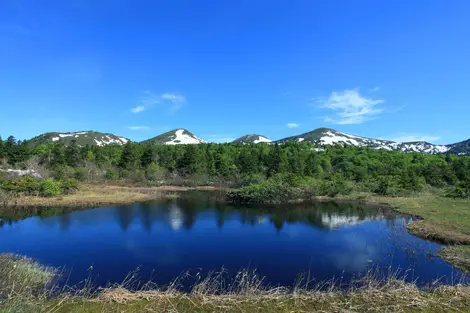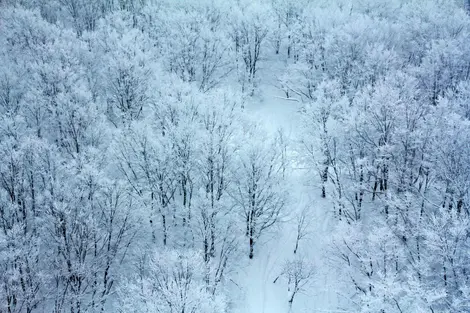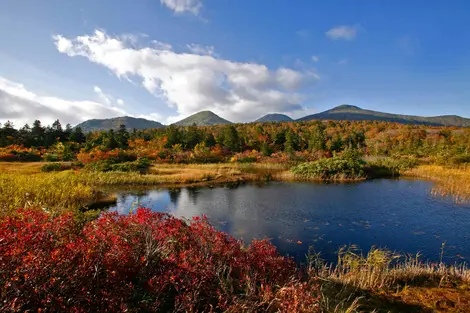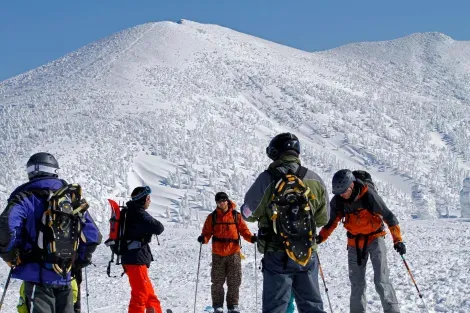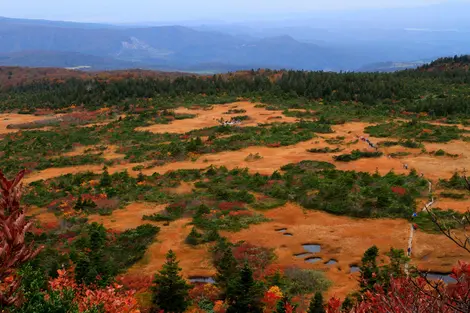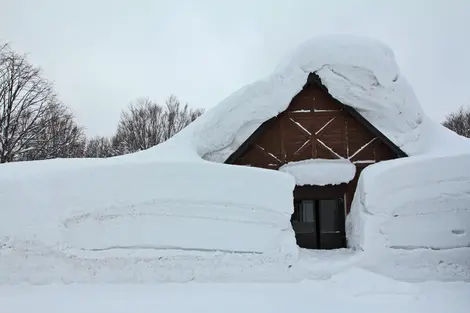Mount Hakkoda 八甲田山
- Published on : 14/12/2016
- by : J.L.
- Youtube
The all-season mountain
Mt. Hakkoda is in the center of Aomori prefecture. Mountain lovers visit throughout the year to hike and enjoy nature.
Mt. Hakkoda is part of a group of 18 volcanic mountains 1000-1600 meters above sea level in northern Japan. As it is in the north of the archipelago, the weather conditions are similar to those of a mountain at 3000 meters altitude.
Spring, Summer, Autumn, Winter...
From June to September, people come to hike in the countryside and see the many alpine plants. Then, from October to November, to admire the Koyo: colorful autumn leaves that transform the whole forest. And from December to May for the ski season. There is always an activity no matter what time of the year, and beauties to behold.
Hiking choice
Access is easy with the Hakkoda cable car, which is only an hour's bus ride from the city of Aomori. Then a 10 minute climb will take you to 1320m altitude. A beautiful panorama can be seen from all the mountains of Hakkoda: Aomori City, Mutsu Bay, and even Hokkaido can be seen in good weather. From the cable car station, three hiking trails are available. The Hakkoda Godo line is a hiking trail taking around an hour (1.8 km), set around a marshy plain. It offers several vantage points from which to admire the landscape, with a nice variety of alpine plants throughout your trek.
View from the top
Continuing from the Godo line, the Kenashi Paradise line is a hiking trail and mountain climbing for beginners. It's a two and a half hour journey to Sukayu. Going down the 180 steps of a steep staircase, you'll see an open landscape, which reveals different facets of the mountains every season, especially in koyo season. Finally, the third way, the rise of Odake, also up Sukayu through Mount Odake (1585m), four hours away. Good equipment is needed to get through this last hike.
Snow monsters
For winter sports enthusiasts, Mount Hakkoda is the ideal spot. The place is famous for its snow, among the deepest in Japan. On the slopes you'll find snow monsters, a phenomenon caused by the extreme weather conditions prevailing there: trees covered with frozen snow, creating fantastic natural sculptures. It's a fascinating spectacle as can also be seen in Zao. The conditions can be very severe, so much so that in 1902, a group of Japanese soldiers found themselves trapped in a snowstorm during a training session. Novelist Jiro Nitta wrote the book Death March on Mount Hakkoda about what happened. The tragedy had 199 victims, and is still the largest mountaineering disaster in the modern history of mountain climbing.
Thermal spring
Mt. Hakkoda is a volcano, so naturally there are plenty of onsen! Sukayu Onsen is a mixed public bath with accommodation. This spring was discovered in 1684. Its highly acidic sulphurous water is reputed to cure several diseases. The bath, called sennin buro (bath of a thousand people) has an area of 240m2, with four Aomori cypress wood baths filled with white water from different sources.







